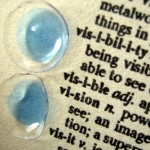 Experts are not good at detecting deception according to the The Huffington Post and new research conducted by Professor of Applied Social Psychology, Aldert Vrij.
Experts are not good at detecting deception according to the The Huffington Post and new research conducted by Professor of Applied Social Psychology, Aldert Vrij.
Dr. Vrij reveals that with an average accuracy rate of 56.6%, lies go undetected more than 1/3 of the time!
His latest research suggests that even trained professionals such as police and customs officers are no better than the average person at detecting deception.
Why are trained professionals not good at lie detection?
There are a plethora of reasons why professionals may not display a high accuracy rate for deception detection. Perhaps, they are only trained in one area of deception detection such as body language (excluding, micro facial expressions and/or statement analysis). Perhaps, they are just not trained often enough, that is there is an infrequency to their trainings; therefore, the review of their skills. It could even be that they were simply not trained properly and there is a misapplication of the skills that they learned.
Detecting inconsistencies in nonverbal behavior (including facial expressions and microexpressions) is a crucial skill that needs to be practiced often. As with many trainings, including Humitnell’s micro expression training, one should re-visit it often to remain agile in the core principles of that training.
We do not expect our trained soldiers or law enforcement agents to go out into the field without continuing to practice gun safety and execution. Like many other things in life, deception detection techniques should be practiced to be able to accurately and efficiently sift the truth from the lies.
Dr. Vrij goes on, in “How to Tell Who is Lying to You”, to note the two main ways to be a better lie detector are:
1. The Baseline Method: There is no one behavior that is universally characteristic of liars, but when any particular individual starts to stray from the truth, various cognitive, emotional and physiological processes kick in, which are possible to detect. However, you can only spot these if you already have the ‘baseline’ of how someone behaves when they are telling the truth
2. Devil’s Advocate: Interviewees are first asked questions inviting them to argue in favor of their personal view. This is followed by a Devil’s Advocate question that asks interviewees to argue against their personal view. The Devil’s Advocate Question is actually what they really believe, but are covering up. As we think more deeply about, and are more able to generate, reasons that support rather than oppose our beliefs, this leaks out during the answer to the Devil’s Advocate Question.
Dr. Matsumoto’s new book, Nonverbal Communication: Science and Applications, marries the two worlds of knowing how to detect deception with putting that knowledge into practice.
What do you think about the information in this blog?
What is the top pertinent point that you would share with someone else?
 The Facial Action Coding System is a scientific system designed to measure facial behaviors. Facial behaviors include individual facial movements such as pulling the eyebrows up, as well as more general facial activities like turns and tilts of the head. 1
The Facial Action Coding System is a scientific system designed to measure facial behaviors. Facial behaviors include individual facial movements such as pulling the eyebrows up, as well as more general facial activities like turns and tilts of the head. 1 you are willing to invest.
you are willing to invest.
